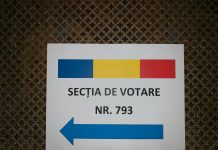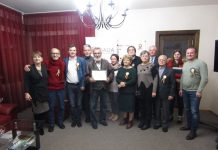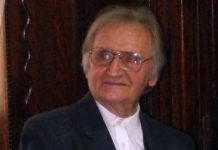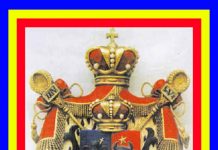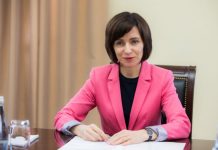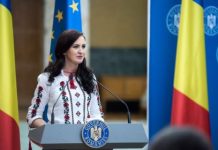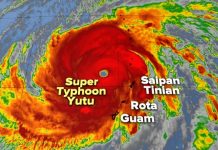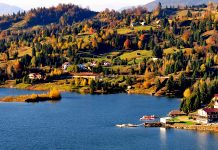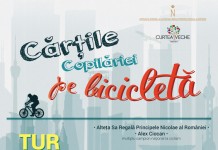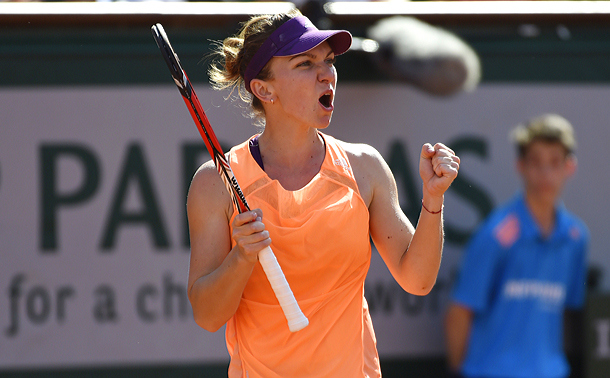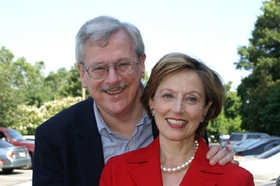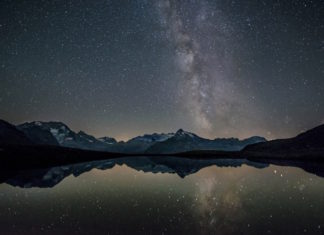 Authors of Dracula Is Dead. How Romanians Survived Communism, Ended It, and Emerged since 1989 as the New Italy
Authors of Dracula Is Dead. How Romanians Survived Communism, Ended It, and Emerged since 1989 as the New Italy
How is Romania doing now, 20 years after the fall of Communism?
Very well. In fact, Romania is a vigorously democratic country with well-educated young people, remarkable foreign language skills, a rapidly modernizing economy, and ethnic relations that are a model for more troubled regions.
For much of the last decade-until the worldwide slowdown in 2008-Romania’s biggest economic problem was a labor shortage. The carmaker Renault makes its popular Logan in Romania, and ships it all over the world. European and American manufacturers-from big firms like Alcatel, Siemens, and Ford, to family-owned companies from Italy-are making Romania the workshop of Europe. Microsoft, Hewlett-Packard, and dozens of IT companies are profiting from Romanians’ world-class software skills. Romania graduates software engineers at a much higher rate than the United States.
How did Romania recover from Communism?
First, by opening up the political system-like glasnost in the Soviet Union. While we were living there, just ten years after the end of the dictatorship, politicians’ major concerns were fundraising, press coverage, and poll ratings. Then they restructured their economy, reorienting it to the world market. They privatized their apartments, with the result that Romania today has a rate of home-ownership much higher than the U.S.-95 percent, compared to 68 percent in the U.S.-with much less mortgage debt. They returned plots of land to millions of families who had owned them before Communism.
Thus, for years after the fall, most families would feed themselves from what they raised, even if they lived in cities. And Romania promoted early retirement on a massive scale. The bad news was that workers in their fifties and even forties were forced out of work and left to live on their small pensions. The good news was that, with no debt on their homes and small plots on which to raise food, they could survive as the economy reoriented itself to the twenty-first century.
Why do you call Romania the New Italy?
First, unlike those of its neighbors in the Balkans, Romania’s language and culture are Latin. They call themselves Romanian for a reason. Theirs is one of the five Romance languages and, like the others, their roots are traceable to the Roman Empire. In the second century, Emperor Trajan conquered the native Dacian population of what’s now Romania.
Second, like the Italians, they have Roman ruins, government corruption, world-class creativity, a zest for life, and vivacious, attractive people. With nearly twenty-two million people, Romania is the seventh-largest country in the European Union. Driven by the ambition of its people and the Economic Union, Romania’s economy grew rapidly, as Italy’s did in the decades after World War II, until the worldwide recession of 2009.
How are the former Soviet satellites of Eastern Europe doing in the worldwide economic crisis?
Because they so quickly and successfully integrated themselves into the European Union, the recession in Western Europe, particularly in Germany, has hit Eastern Europe hard. The bad bets made by Western European financial institutions in the U.S. sub-prime market has compounded the problem because these banks now dominate banking in Central and Eastern Europe.
In recent years, these nations became what Romanians like to call “normal countries.” Shopping centers line the roads outside most cities, middle-class families vacation in Greece and Turkey, students work and study in London and Paris , and credit cards, mortgages, and consumer loans are the coin of the realm. But, by 2009, “normal” meant riding the escalator of globalization down, not just up.
What is Transylvania really like? Did you meet Dracula?
Transylvania is beautiful. There’s such a disconnect between the gloomy image created by the Dracula movies … and the reality of bright sunshine on snowy ski slopes high in the Carpathian Alps, flocks of fat sheep grazing on hillsides, and elegant cities that were already centers of learning and culture before Europe ever set its gaze on North America.
Even more striking than the landscape is the mix of people in Transylvania. This territory has been claimed by both Romanians and Hungarians for centuries, so cities and villages reflect the history of both. Transylvania became part of Romania at the end of World War I, partly because of the lobbying of Queen Marie of Romania at the Paris talks of 1919.
After centuries at the bottom of the pecking order in Transylvania, Romanians were now in charge. Small wonder there has been tension and outright violence between Romanians and Hungarians in the past-and all the more impressive that the two groups now live in peace with one another. The 1.5 million Hungarians who live in Romania make up the largest ethnic minority in Europe. They are well organized politically and vocal in advancing their interests, such as Hungarian-language education.
Germans were also part of the Transylvanian mix, invited by the Hungarian rulers to put down roots in Transylvania more than eight hundred years ago. Few people of German heritage still live in the region, but the seven towns they built, the siebenburgen, still stand.
Amid the religious diversity of Roman Catholic Hungarians, Orthodox Romanians, and Protestant Germans, Transylvania is where Unitarianism was founded. David Frerenc championed freedom for every person to worship in his own way-a radical idea n the sixteenth century.
In Transylvania, we visited the birthplace of Vlad the Impaler, the fifteenth-century prince who was the basis for Bran Stoker’s Dracula. Sighisoara is a beautifully preserved medieval city with fortified walls and a clock tower. We also visited the church where he is said to be buried, on an island north of Bucharest. But the closest we came to talking with Dracula was in the Dracula Club Restaurant in Bucharest, where a delightfully spooky actor brings the legend to life.
How are the abandoned children in the orphanages faring?
Better, but there still are tens of thousands of children in need. Romania’s orphanages were poor because the country was poor, and the children, like all Romanians, lacked political power. The orphanages were large because Ceauşescu had banned abortion and promoted child-bearing.
He thought he could strengthen Romania by growing its population. But by driving down living standards at the same time, his policies grew an underclass of poor families who could not support their children.
Most of the children in the state institutions were not, in fact, orphans in the sense Americans use the term-children with no living parents; eighty-four percent have at least one living parent, and sixty percent have two.
Like many European countries, Romania did not have a welfare system in which the state gave cash to single parents to help them raise their children. The normal way poor parents helped a new child whom they could not support was to take him or her to the state orphanage. In many cases, they would take back the children when their financial circumstances improved.
It’s not a stretch to say that the system former U.S. House Speaker Newt Gingrich proposed in the 1990s as an alternative to our Aid to Families with Dependent Children was actually tried-in Romania.
By the time we got there, ten years after Ceauşescu, the foreign and Romanian response to the abandoned children had become institutionalized, mostly in the good sense. The single volunteers of 1990 had morphed into full-scale charities. The Romanian government, with support from UNICEF, the World Bank, and USAID, has promoted group homes, foster parenting, and domestic adoption to reduce the nu
mber of children in the orphanages.
You lived in Romania for three years and continue to travel there frequently. What were some of your biggest surprises about its people and culture?
Men still greet ladies by kissing their hands.
Longstanding strengths in engineering combine with Latin creativity to give Romanians an edge in software design.
Contrary to the stereotypes of Communist-inspired inefficiency, Romanians have a very strong work ethic.
Contrary to the stereotypes of ethnic strife in the Balkans, Romania has good and peaceful relations with all it neighbors-and with its huge Hungarian minority.
Transylvania is the Holy Land of Unitarians. Unitarianism, with its call for freedom to worship, started in the Romanian city of Cluj in the sixteenth century.
What lessons from the Romanian overthrow of Communism are relevant to countries like Iran and Iraq?
Three big ones.
First, tyranny is not permanent. If most people want democracy, they can win it, assuming some luck and some help from the outside.
Second, each country’s path from dictatorship to democracy is different. Poland and Romania threw off Communism in the same year, 1989, with the help of the Soviet Union standing back. But how each did it was very different.
Poland had a well-developed internal opposition movement, Solidarity, and negotiated the transfer of power in public. Romania was the only Eastern bloc country which executed its dictator.
Third, the U.S. and other democracies can help. The economic success and military strength of the U.S. and Western Europe during the decades of Communist rule in the East were clearly beacons for Romania. And after the 1989 revolution, it consolidated democracy relatively quickly, in part because we reached out with hands of friendship and opened the doors of NATO and the EU to Romania.
Why do you say Dracula is dead?
In the twenty years since the collapse of Communism, Romanians have proved to the world, and most importantly to themselves, that the myths that oppressed them over the centuries are, like Dracula, just that-myths. In particular, myths of isolation and powerlessness imprisoned Romanians for too many years. As they enter the second decade of the twenty-first century, with an open society where their world-class strengths can shine, Romanians are free, and they know it.






